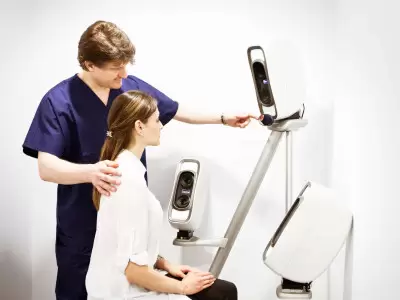Endoscopic Lacrimal Sac Surgery
Dacryocystorhinostomy is applied to the patients with obstructed lacrimal sac and duct system that collects and transfers the tears from eyes to the nose, due to various reasons.
In patients with tear outflow (epiphora) and recurrent lacrimal sac inflammations, if the channels are not opened despite medical treatment and dilatation (widening) and if sufficient amount of tears is not transferred to the nose, then the lacrimal sac is surgically connected to the nasal passages.
Examination, differential diagnosis and treatment of lacrimal sac pathologies and also the decision to perform surgery are taken by the ophthalmologists
Classically applied surgery technique requires an external incision and the lacrimal sac is found and its inner wall is opened and surgically connected to the nasal passage. Lacrimal sac surgery via nose was defined more than 100 years ago but could not gain popularity at that time due insufficient view. This technique came to the fore approximately 20 years ago with the introduction of endoscopic sinus surgery and is started to be used with an increased frequency ever since.
with endoscopic surgery performed by an ophthalmologist and an otolaryngologist together (endoscopic dacryocystorhinostomy), the lacrimal bone between the lacrimal sac and the nose is reached via the nose, after partial excision of the lacrimal bone the lacrimal sac is found, the inner wall of the sac is opened and silicon tubes are passed through the lacrimal ducts that are found in the edges of the lower and upper eyelids near the nose ad then fixed. These tubes are kept at their positions for 2-12 months, according to the condition of the disease.
A significant difference was not found between the success rate of the classical surgery and endoscopic surgery, and this rate was approximately 90-95% for both processes. The formation of hard scar tissue in the lacrimal sac and recurrence of the obstruction are the most frequently encountered complications. In endoscopic surgeries, primarily epistaxis (bleeding of the nose) and other complications belonging to endoscopic surgery may additionally be observed though rare.
In recent years, with the advancements in endoscopic surgery technology, lasers and microdebriders that streamlines the stage of passing the lacrimal bone inside the nose are developed, and with the introduction of surgical navigation systems that provide the operator to see the precise location of the anatomical structures and then perform the operation while the complication rate of endoscopic surgeries are reduced, and the duration of the operation is also significantly reduced.
Major advantages of endoscopic dacryocystorhinostomy surgery;
No scar formation on the face
Functions of the lacrimal sac not being effected to a large extent
Short duration of operation
Short recovery period and being able to return back to normal life in a short time.






Comment
Your Contact Information will not be shared in any way. * Required Fields